Battle Scars: Lindsey Vonn’s Many Wounds Have Prepared Her For A Final Golden Olympic Run

Four daysbefore Christmas, Lindsey Vonn has agreed to tally up her many scars. The scars on her 33-year-old body. On her heart. Her soul. Her ego. Her job is racing down icy mountainsides at 80 mph; her life is often consumed by personal drama. Hence, she has no shortage of those scars, some more lasting and more meaningful than others; some barely noticeable, some still healing. But she also has an uncommon ability to move past any wound, which has made her the most successful U.S. ski racer in history. Because she retains the practical good cheer endemic to citizens of her native Minnesota, Vonn undertakes this listing exercise with zeal.
She starts at the top of her head, with a concussion, and works earthward, through her arm, back, knees, shin, with detours for her mind, body and spirit; and ends with her left ankle, which she broke in the summer of 2015. But then Vonn leans forward on the couch in the great room of her sprawling, four-year-old home on a hillside in Vail, Colo., her U.S. base for more than half her life. She is surrounded by her three dogs, including Bear, a burly rescue chow mix who insists that a visiting reporter continuously scratch his belly or be licked to death. Outside, the snow-starved landscape is depressingly brown. Vonn jumps forward. “Wait: frostbite,” she says, and then she unfurls a bare left foot that had been tucked underneath her thigh, and points. “I got frostbite on my toes when I was young.”
Vonn is proud of recalling this detail, and veers enthusiastically into a story about another accomplished skier from her state who missed an entire season with much more severe frostbite. “It’s a Minnesota thing,” she says, nodding. Ski racers are slaves to precision, from the settings on their equipment to the tiny dips and rolls on a downhill course. In this case, Vonn wants to show mastery of the compendium of injuries, heartbreaks, slights, embarrassments and missteps that have accompanied her 78 World Cup victories (more than any woman and second to only Swedish great Ingemar Stenmark’s 86) and two Olympic medals, including a gold in the 2010 downhill at Vancouver. The lists of scars and of victories are intertwined: There might have been more of the latter had there been less of the former, but the meaning of the triumphs has been enriched by the struggles.
Next month, Vonn will compete in at least the downhill, Super G and combined (a mix of downhill and slalom) events in PyeongChang, South Korea. The Games will be Vonn’s fourth, despite missing the 2014 Olympics in Sochi, while recovering from knee surgery. She will be among the oldest racers on the mountain—nearly all of the competitors who came into the sport when Vonn did are retired—and, by a wide margin, the most accomplished.
Vonn’s Olympic preparation, which accelerates in January with at least eight World Cup races, has been a microcosm of the most recent years of her career: intense training followed by moments of brilliance; a scary high-speed crash (while leading a downhill at Lake Louise, in Alberta, Canada, in early December); three media controversies of varying intensities; and, on Dec. 16 at the French resort of Val d’Isère, first place in a World Cup Super G race, just her second win since early February 2016. At the bottom of the hill, Vonn grabbed the television camera with both hands and huffed: Yes! Yes! Yes! Yes! Yes! At home in Vail a few days later, she said, “I wasn’t doubting myself, but I needed to get things going.”
It was a moment that reminded the ski world that Vonn is still fast enough to win. (U.S. prodigy Mikaela Shiffrin knows this already. “Lindsey still has speed,” she said in an interview with SI. “Plenty of it.”)
And something else: Vonn will push from the start house in South Korea wearing not only skis, boots and a helmet, but also a back protector and a brace on her right knee. And every one of those scars. “I’m a tougher person today,” says Vonn. “I’m stronger.”
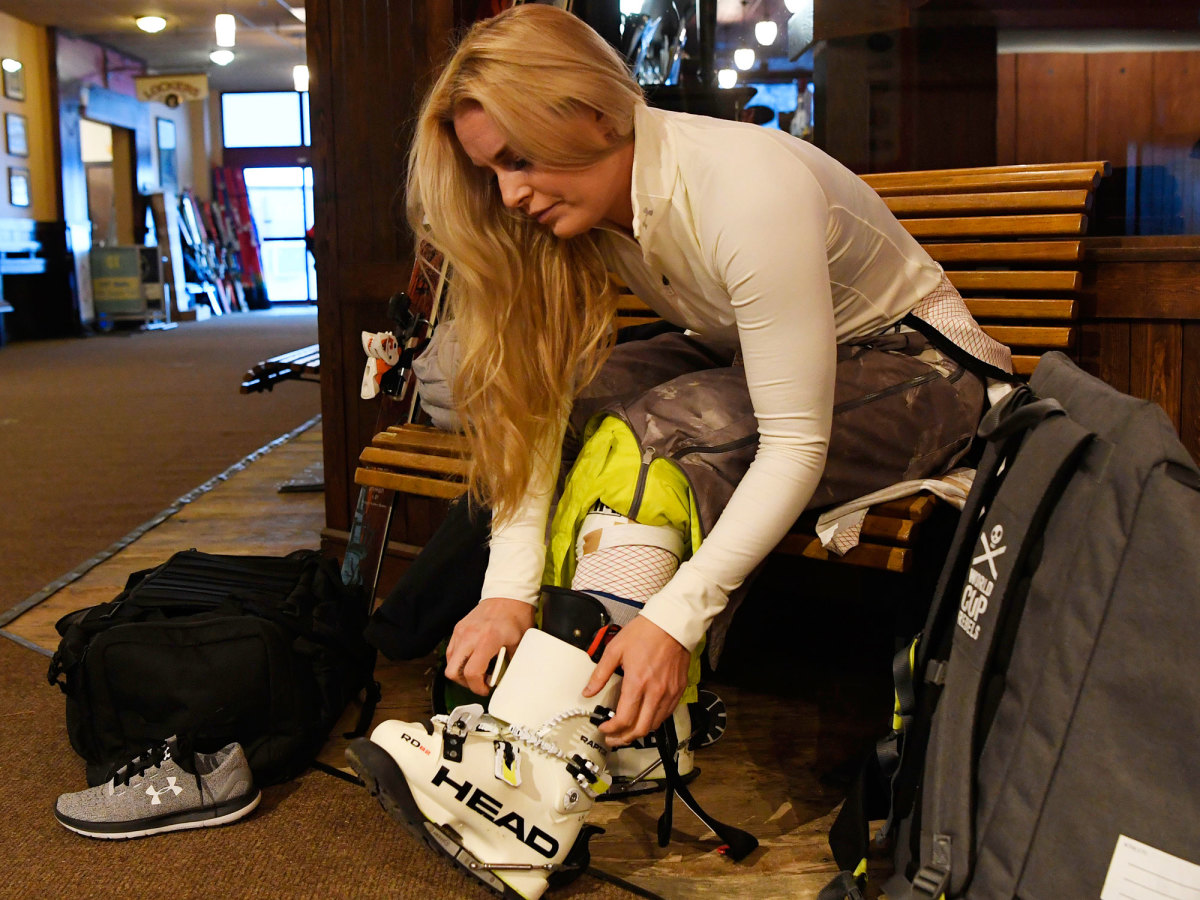
Scars: The Body
Vonn is 5'10" and weighs around 160 pounds. She has a powerful body that has been betrayed in ways ranging from horrific to comical. She suffered nine major injuries and had five surgeries from 2006 to ’16. Ski racing—especially in downhill and Super G—is wildly dangerous. Everyone gets hurt, but Vonn has been hurt more than most.
She was diminished at the 2006 Olympics by a crash in downhill training, but, in her words, “escaped from the hospital” to compete in both speed races, finishing seventh in Super G and eighth in downhill (remarkable in her condition). Three years later, after winning the downhill at the world championships in Val d’Isère, she severed a tendon in her right thumb while attempting to spray celebratory champagne from a bottle with a razor sharp neck. (The cork had been removed by a ski.) There is still a lump on the inside of her thumb, which she cannot straighten.
There was the shin bruise that nearly kept her out of the 2010 Olympics and a year later, the concussion that left her fuzzy while winning silver at the worlds in Garmisch-Partenkirchen, Germany.
The two worst injuries have come most recently. She blew out her right knee in a Super G crash at the 2013 worlds in Schladming, Austria, and damaged the same ACL in training for the Olympics at Copper Mountain in Colorado the following November. Vonn says she was told by doctors that the knee was stable, so she continued to race, and eventually she fully tore the ACL at a race in Val d’Isère, missing the 2014 Games. The lesson: It was time for Vonn to take tighter control of her training and racing. “There was a hole on the course at Copper that day in 2013, and nobody told me,” she says. “I’ve made it clear since then: If there is anything wrong with the hill, I’m stopping.” She had her knee redone by Dr. James Andrews in Florida.
In November 2016, Vonn fractured her right humerus during training, also at Copper Mountain. She was evacuated from the hill in a truck, 90 minutes on unpaved roads. “By far the most painful injury of my life,” she says. “There was no med-pack on the hill, so no pain meds.” The injury was repaired with 20 screws and one long plate, but for weeks Vonn had no feeling in her right hand. “Couldn’t brush my teeth, couldn’t do my hair, couldn’t hold a spoon,” she says. And, another lesson: Vonn now always knows evacuation plans at training locations.
Her age and injuries have compelled Vonn and her team—coaches Chris Knight and Alex Hoedlmoser, Red Bull trainer Alex Bunt and head ski technician Heinz Hämmerle—to make changes to her training and technique. The day after her December win in Val d’Isère, Vonn was scheduled to race another Super G; however, her right knee was sore, so she went home early for the holidays instead. “We try to limit the number of consecutive days on snow,” says Knight, 45, a New Zealander who has worked with the U.S. ski team for 15 years. “We track her days on snow and she tracks how she’s feeling every day. We’ve gotten smarter.”
Vonn has also implemented technical changes to accommodate a body with high mileage. The oldest Olympic Alpine medalist was Bode Miller, who was 36 when he took bronze in the Super G in Sochi; the oldest to win gold was Mario Matt of Austria, who was 34 when he won the slalom, also in Sochi. “Now she has more balance on the outside ski at the top of the turn, and better flex in her knees through the turn,” says Knight. “And you have to, when you get to this stage of her career.” Knight laughs, and adds, “She’s actually a better skier than when she was younger. It would be nice to have Lindsey’s 23-year-old body, skiing the way she does now.”
One other thing. “She’s still fearless,” says Knight. “With everything she’s come back from, it constantly amazes me that she has not backed off 1%.”
Says Vonn, “I have the same mental approach that I had when I was 18.”
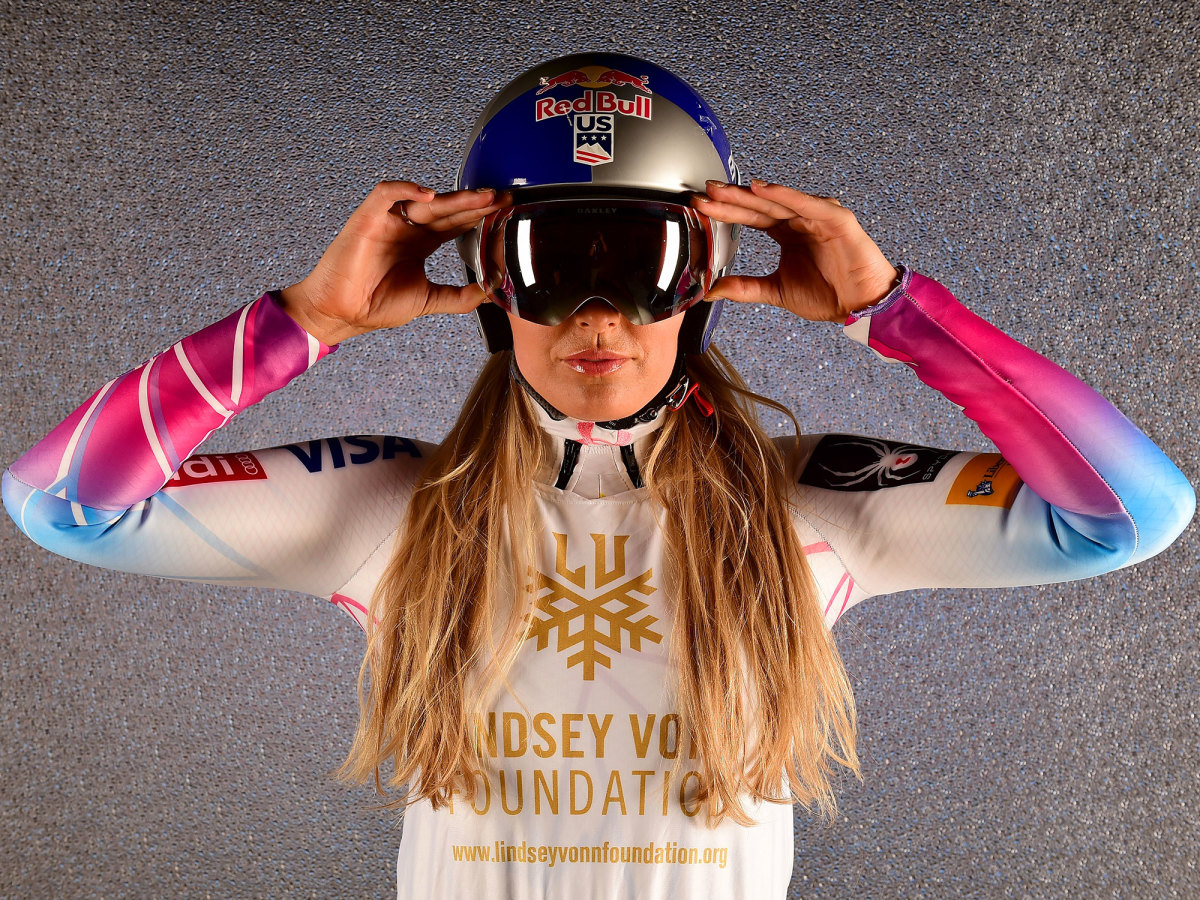
Scars: The Olympics
Vonn’s status in the ski world is secure. Those 78 World Cup wins are 16 more than any other woman. (At 22, Shiffrin is on a scorching pace, with 40 wins, but this is another discussion, to be addressed in a moment). Vonn says she wants to go at least one more year after this year, so catching Stenmark is not out of the question. But U.S. athletes in Olympic sports are largely defined by their medal count at the Games, and Vonn has been outrageously unlucky there.
She was a multiple medal threat when she crashed in 2006. She got her two medals in Vancouver—her gold medal downhill there is the most memorable run of her life. “I was so in the zone,” she says. “I just sort of blacked out.”
She wanted to win another one in Sochi. When she suffered her knee injury in ’13, she had won the World Cup overall points title in four of the five previous seasons. After the 2014 Games, she came back from the injury to win 17 World Cup races over the next two years. The Olympics can be quirky, but it’s likely a healthy Vonn would have climbed a podium in Russia.
“There are no do-overs for the Olympics,” says Vonn. “I loved that track in Sochi. I will forever be incredibly sad to have missed that.”
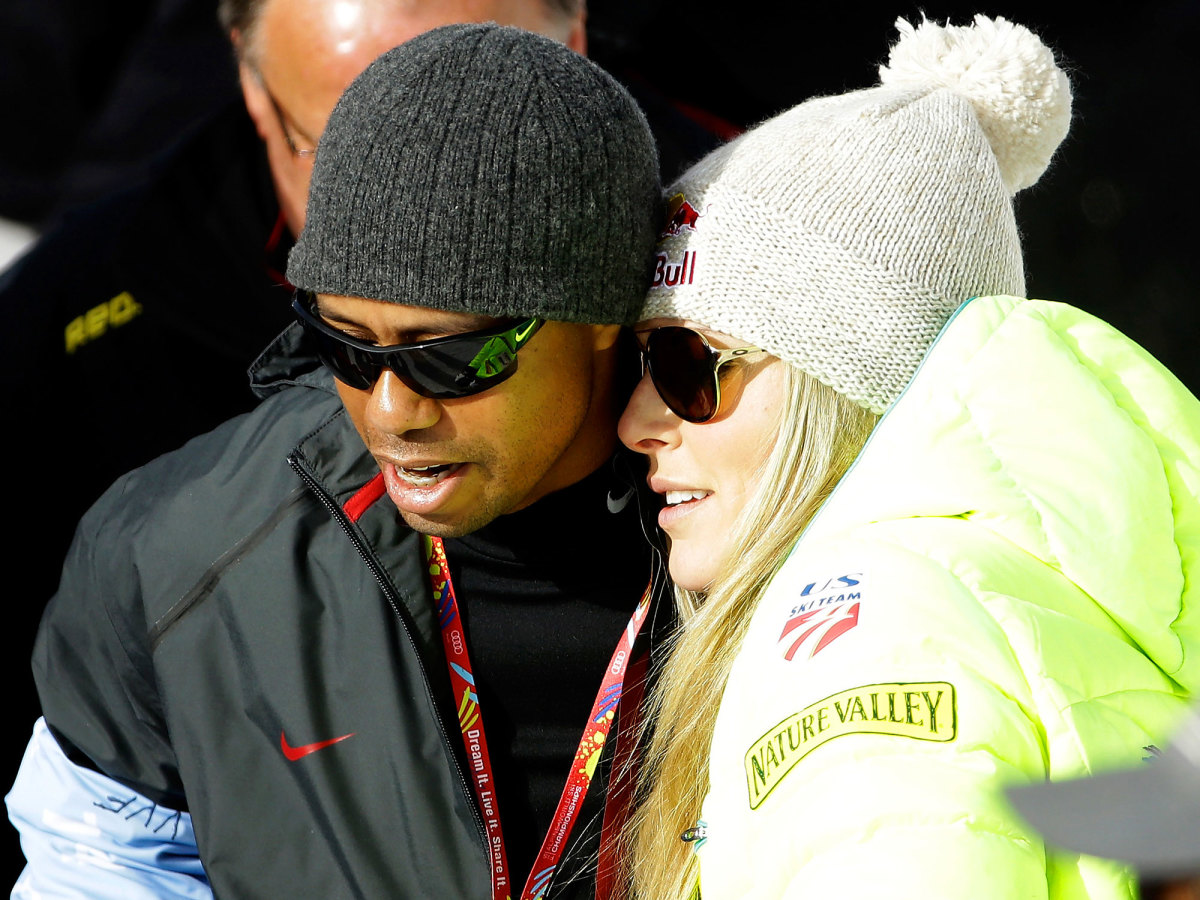
Scars: The Significant others
Lindsey Vonn was Lindsey Kildow when she met U.S. Ski Team racer Thomas Vonn during summer training in Park City, Utah, in 2001; she was 16 and he was 25. They began dating the next year and were married in ’07. Thomas became his wife’s de facto coach and handler and leader of what came to be known as the Vonntourage. They split in 2011 and divorced in January ’13, shortly before Vonn’s crash in Schladming. “I probably shouldn’t have gotten married so young,” says Lindsey. “But I won’t say I regret it. I got older and things just changed.” Her family has encouraged her to change her name back to Kildow, but she has resisted. “People come to races to see Lindsey Vonn,” she says. “It’s my stage name. It’s who I am on the hill. Maybe I’ll change it back when I retire. Or if I get married again.”
The Vonn divorce was thunderous news in ski racing. But nothing compared to what followed. Vonn dated Tiger Woods for more than two years, with the relationship ending in May 2015. The celebrity couple was paparazzi catnip.
Vonn is asked if it was a good idea to date such a famous—and infamous—man. “I mean. . . I was in love,” she says. “I loved him and we’re still friends. Sometimes, I wish he would have listened to me a little more, but he’s very stubborn and he likes to go his own way. I hope this latest comeback sticks. I hope he goes back to winning tournaments.”
It was all very public. “It’s hard enough to break up with a boyfriend,” says Lindsey’s sister Karin, “without having to issue a press release about it.”
Scars: Social media
Vonn’s relationship with Woods piggybacked on his scandals and thrust her into the savage world of social media. “I had to learn to have thicker skin, right away,” says Vonn. In August of 2017, nude photos of Vonn, Woods and several other celebrities were leaked online. Woods and Vonn took legal action and the photos were pulled down, but not until they had been up for more than 24 hours. “I felt violated,” says Vonn. “I don’t think there’s anything more embarrassing in the world. Why would someone do that?”
In November, Outside magazine published a profile of Shiffrin. The piece was appropriately flattering—Shiffrin is a wunderkind by any measure— and noted that she was “on track to win more races and more championships than any skier ever,” which is absolutely true, though success in such a dangerous sport is not guaranteed. Outside’s editors went further in their cover tag: mikaela shiffrin is the greatest skier of all time. (discuss).
Vonn did discuss, posting a tweet with a screenshot of the Wikipedia page that lists her victories and records. Shiffrin, who is driven and confident but generally humble, replied: “@lindseyvonn Trust me girl, we all know you da #GOAT and my name isn’t even close to making that list yet #respect.” Then it was Vonn’s turn: “No worries girl, that tweet wasn’t intended for you. Happy that another strong woman is on the cover of a magazine and it’s great for skiing as well as you . . .” Vonn also deleted the original tweet, thus ending the non-feud. But the exchange shined some light on one point: Vonn has, and likely always will have, a chip on her shoulder.
That Twitter exchange was just a warmup. On Dec. 7, Vonn was interviewed by CNN:
CNN: “You’ve previously competed at three Olympic Games, under two presidents. How would it feel competing at an Olympic Games for a United States whose president is Donald Trump?”
Vonn: “Well, I hope to represent the people of the United States, not the president. . . . I take the Olympics very seriously, and what they mean and what they represent. What walking under our flag means at the opening ceremony. I want to represent our country well. I don’t think that there are a lot of people currently in our government that do that.”
Vonn was later asked if she would visit the White House with other Olympians and said, “Absolutely not. No.”
She took an online beating from Trump supporters and Trump-leaning media, and later wrote a long Instagram post in which she quoted Ronald Reagan. She did not apologize for her earlier comments. “People were calling me un-American or some crazy liberal, which I’m actually not,” says Vonn. “I was taken aback by the negativity. I love my country. I’m proud of the flag and our troops. Just because I disagree with some things doesn’t make me less American.”
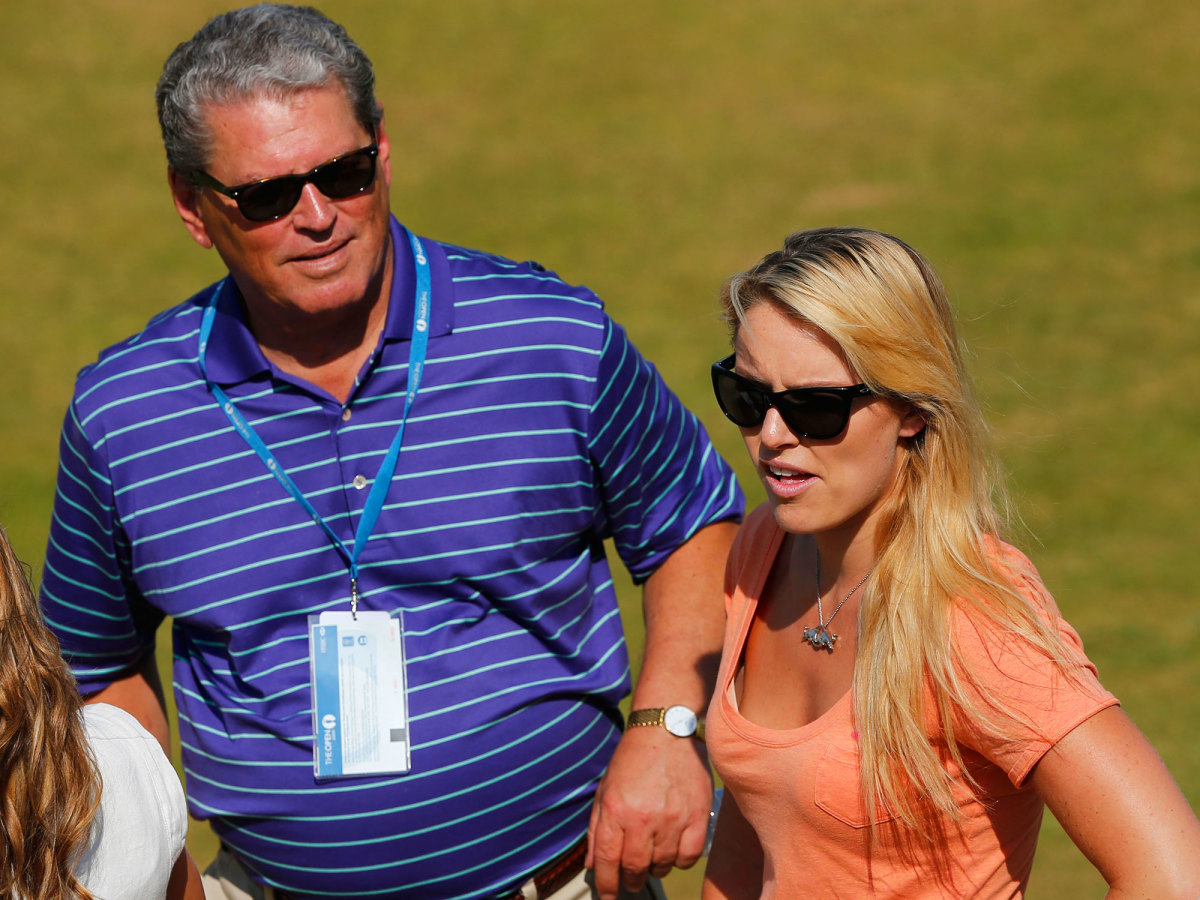
Scars: Dad
Alan Kildow was a ski racer in his youth who introduced his daughter to the sport and guided her early career. When Lindsey married Thomas, her relationship with her father became strained. (Alan and Lindsey’s mother, Linda, divorced in 2003.) For nearly a decade, father and daughter rarely communicated; when Vonn won her gold in Vancouver, Alan, a lawyer, was sitting at his office in Minneapolis, watching on a computer screen.
Over the last few years the chill has thawed, and Alan has been attending her World Cup races. Alan’s father, Don, died on Nov. 1 at 88. Don was close with Lindsey and his death underscored for Alan and Lindsey the fragile nature of life and family. “He’s my father and I want to have a relationship with him,” says Lindsey. “I don’t want to have regrets later. This is the end phase of my career and he wasn’t around for a long time when I was at my peak. But he appreciates it more now. Everything comes back around.”
Alan, 65, now splits his time between offices in Minneapolis and Denver, to be near Lindsey, his eldest daughter (there are three). He will be in PyeongChang. “Do I regret the time we weren’t close?” Alan says. “Yes, I regret it. There’s a sadness and a hole there. It’s fun to be with her now. My job is to stand at the bottom of the hill and be a rock for her. I’m very good at that.”
Not always. When Vonn won in Val d’Isère, she found her father at the bottom, crying.
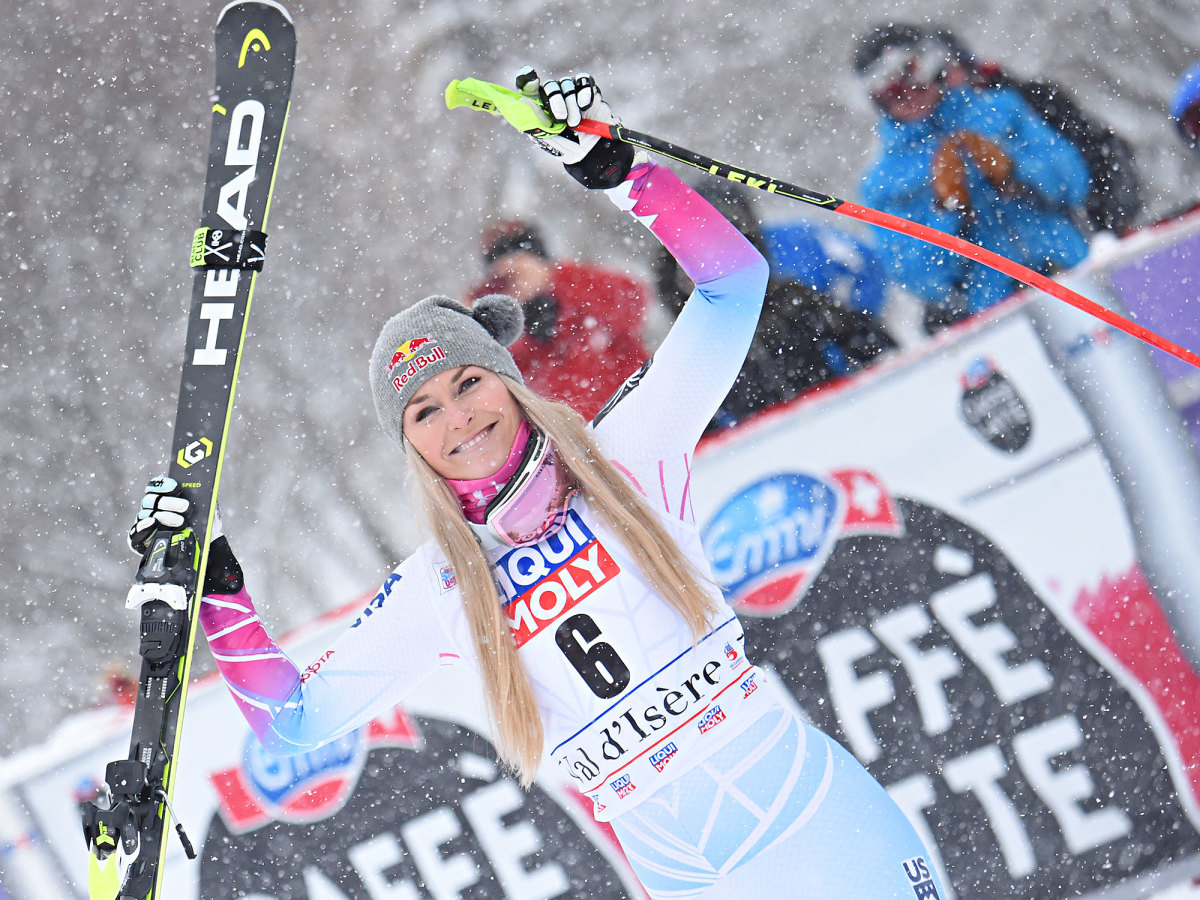
There is an urgency for Vonn. She will always ski, but not as she has for the last two decades, screeching down steep mountains, trying to shave hundredths of a second that can separate first from 10th. That is the feeling that moves her more than anything. “I love pushing myself to the limit,” she says. “I love going fast.”
Her home has many trophy cases, including two giant wooden shelves over her fireplace, where her World Cup globes are lined up like soldiers. Up the stairs, past her home gym, there’s a smaller, glass-enclosed trophy case in a hallway. She reaches inside and removes a tiny figure. “My first skiing trophy,” she says. The award is for a fifth-place finish at Afton Alps, a resort in Washington County, Minn., on Feb. 22, 1992, when she was seven. A small marble base supports a shiny gold skier. Her skis are together, her hands thrust forward in a racer’s tuck. She is free in the wind and cold.
